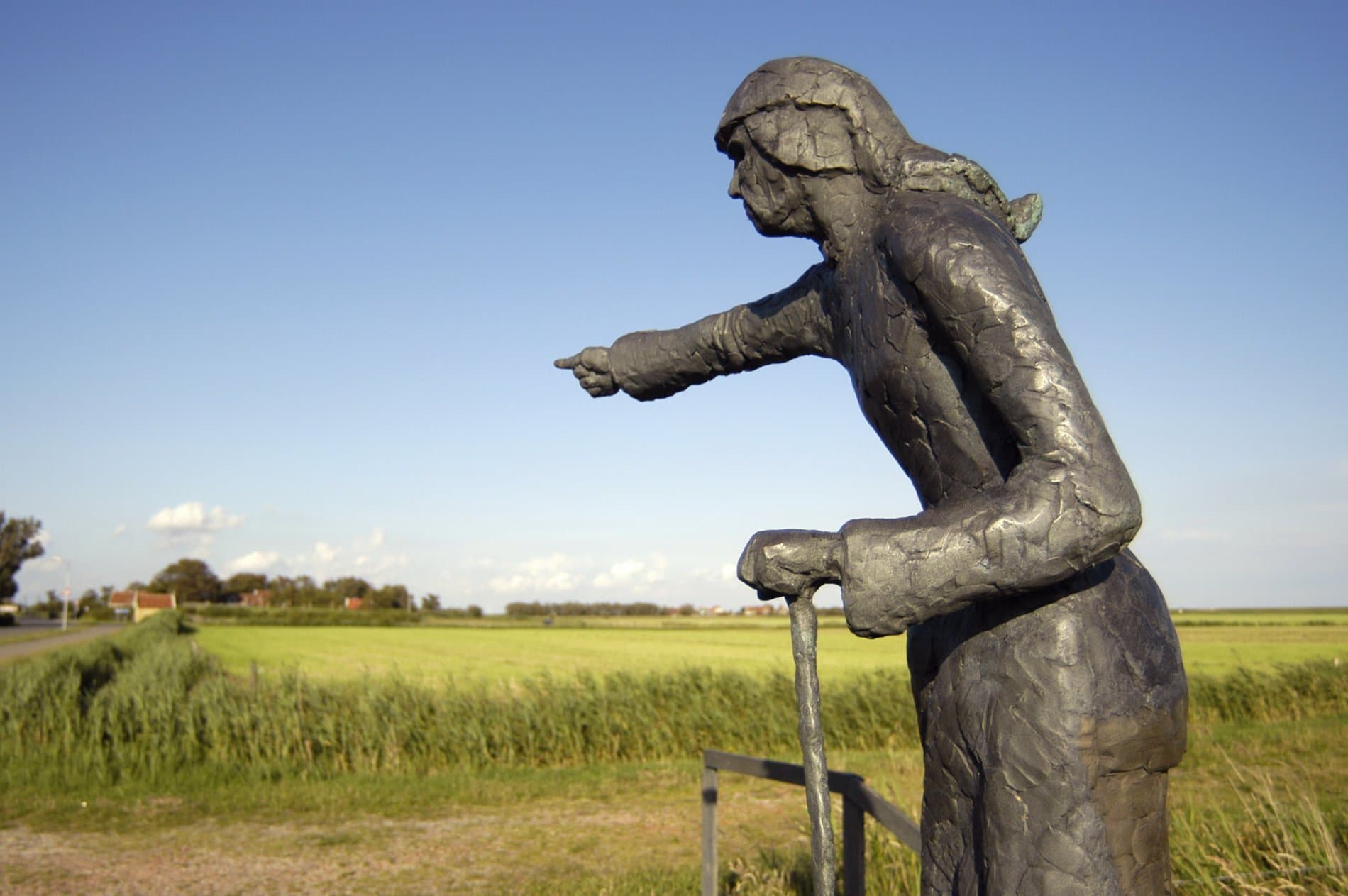
Striep
This hamlet was built near an old discharge sluice in the Wadden dike, and was given its Dutch name "Seerijp" or "Zeerijp" because of it. The discharge sluice was removed after land consolidation of 1948. Striep has been its official name since 2009. Before that, the hamlet was called Seerijp.
Striep refers to an ancient settlement which once stood to the west of the current hamlet. A remainder is the Strieperkerkhof cemetery, to the southwest of Midsland. Research indicates that a wooden church stood on the Strieperkerkhof around 850 AD. The oldest remains of settlements on Terschelling island were found at the Strieperkerkhof. A stone church was built on the Strieperkerkhof in later years - the Sint Maartenskerk - which was set on fire by the "Watergeuzen" (Beggars of the Sea) in 1569. The tower collapsed in 1603. After that, the Strieperkerkhof was a burial mound where people were buried until 1916. The churchyard was a cemetery for West Terschelling for many years, after the old churchyard of West was swallowed by the sea.
According to legend, the Strieperkerkhof is closely related to the attack by the English fleet in 1666. English soldiers set fire to West Terschelling, and marauded across the island toward the east. Through the smoke and fog they discerned the burial mound with several tombstones raising from it. A woman who lived there, better known as the Stryper Wyfke (Little Old Lady of Stryper), told them: "They stand by hundreds, and lie by thousands", referring to the graves. The English thought this meant an enemy army was waiting for them, and turned on their heels. This is how the Stryper Wyfke saved the eastern part of Terschelling from plundering and fire. A statue of the Stryper Wyfke was later placed along the main road of Terschelling.
Striep is the oldest settlement on Terschelling, and was home to the island nobility. A small castle was built here in 1545, which was the country retreat of Cornelis II van Bergen, lord of Terschelling and Griend from 1529 - 1560. Later, the earls of Arenberg lived there.
South of Striep is Het Nieuwland polder, beter known as the Strieper Polder. It is an individual polder, separated from the Terschelling polder by an old Wadden dike that was embanked in 1602. The dikes of the Strieper Polder were breached several times the last time was in 1825. The Ponswiel, a small lake north of the old dike, is the result of a dike breach.
Sign In
Do you want personal tips for your holiday? Then sign up for the newsletter

